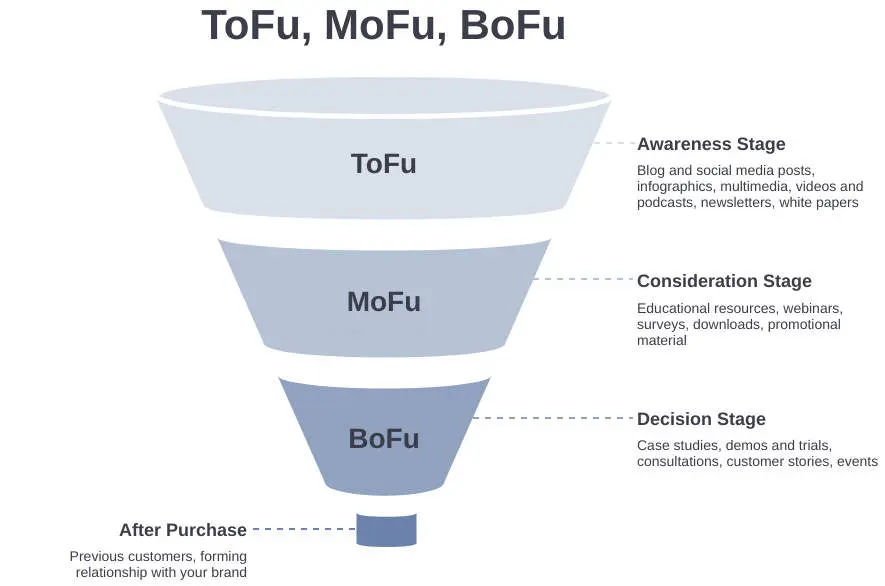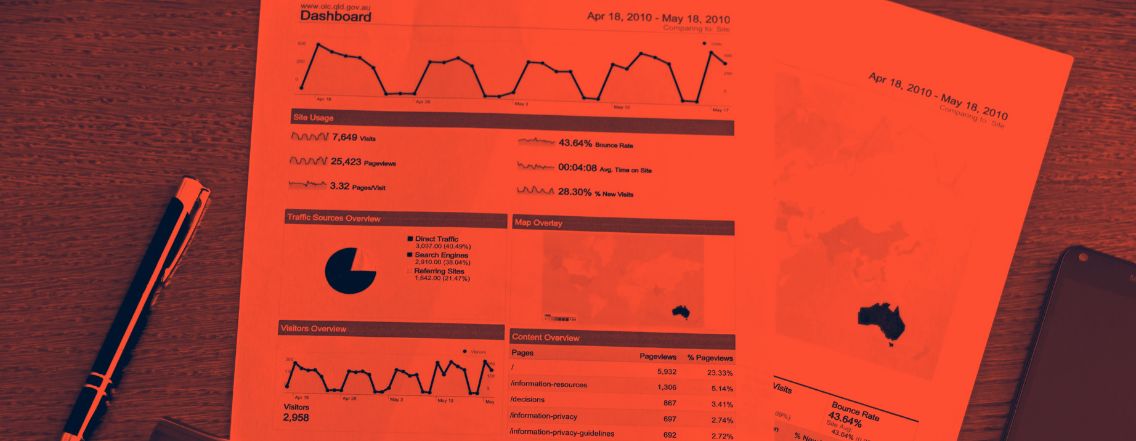This article is part of our series on subscription strategies, whether you’re looking to launch your subscription offer or optimize an existing one. 😃
This series covers all aspects of the topic: acquisition, conversion, customer retention, and KPIs.
For subscription-based businesses, a well-structured sales funnel is more than just an asset—it’s an absolute necessity for converting prospects into customers while maximizing revenue.
A poorly defined funnel risks losing valuable leads and missing out on significant business opportunities.
Chief Marketing Officers (CMOs), the true architects of conversion, must ensure that every stage captures attention, generates interest, and drives action.
Mastering this process not only boosts conversions but also fine-tunes marketing strategies to align with prospect behavior, delivering tangible and lasting results.
Dive into this guide to discover how to build a high-performing sales funnel and lay the foundation for a winning marketing strategy.
The Sales Funnel: Definition
The sales funnel is a strategic representation of the journey a prospect takes before becoming a customer.
At a macro level, it encompasses all interactions between a user and the company, from the initial point of contact to the final conversion. This enables marketing teams to visualize and optimize each phase of the customer journey to maximize conversions.
At a more micro level, the sales funnel focuses on specific interactions of a user, such as their navigation on a website or app. This allows for the analysis of behaviors at each key touchpoint and facilitates the necessary adjustments to improve conversion rates at a more granular level.
Whether at the macro or micro scale, mastering this funnel is essential to smoothly and consistently guide the prospect toward the final action.
The Stages of the Macro Sales Funnel and Tools for Optimization
Awareness (Top of the Funnel – TOFU)
This stage aims to grab the attention of prospects. At this point, it is crucial to provide information that delivers value to your target audience to capture their interest and spark an initial interaction.
Tools used at this stage may include advertising campaigns, content creation, or social media posts. Content marketing is a particularly effective tactic at this stage.
When we learn that 82 % of consumers feel more positive about a brand after reading personalized content, it becomes clear why 78 % of CMOs view content as the future of marketing.
Interest and Consideration (Middle of the Funnel – MOFU)
Once the prospect is aware of your brand, it’s important to nurture their interest and encourage them to consider your product as a relevant solution to their problems.
At this stage, you can use tools such as webinars, personalized emails, product demonstrations, and well-crafted landing pages that showcase your products or services.
Decision (Bottom of the Funnel – BOFU)
At this stage, the prospect is ready to make a purchase decision. This is the moment to drive them to take action, so your call-to-actions (CTAs) must be clear and compelling.
You can leverage tools such as special offers, free trials, or customer testimonials to reassure prospects and motivate them to act.
For instance, BetterProposals observed that introducing a free trial increased their conversion rate from 1.8% to 7%, and it’s now nearly 9%.

Retention and Repeat Purchases
Once the sale is made, retaining the customer is crucial to increasing their lifetime value (LTV).
Strategies such as upselling, cross-selling, and loyalty programs are highly effective in encouraging customers to return.
According to a Harvard Business School study, a 5% increase in customer retention can lead to a 25% to 95% increase in profits.
Best Practices to Optimize Your Micro Sales Funnel
To maximize the effectiveness of your sales funnel, it’s essential to follow a set of proven best practices that will help you optimize every step of the customer journey.
Here are the key points to keep in mind to continuously improve your results and deliver a seamless, engaging user experience.
Clear and Unique Goals per Page
Each page in your funnel should have a single, well-defined goal.
The prospect should only be prompted to perform one action at a time, such as downloading a lead magnet, scheduling an appointment, or making a purchase.
The goal is to guide the user without overwhelming them with choices, ensuring they remain focused on the primary action of the page.
Page Load Speed: A Key Factor
Speed is critical for keeping your prospects’ attention.
According to a Google study, every additional second of loading time can dramatically impact your bounce rate. Consider these statistics:
- A load time of 1 to 3 seconds increases the likelihood of a bounce by 32%.
- A load time of 1 to 5 seconds raises this probability to 90%.
- A load time of 1 to 10 seconds skyrockets it to 123%.
Optimizing your site’s performance, particularly its loading speed, is therefore essential for improving your conversion rate.
Visible, enticing calls to action (CTAs)
Your call to action must be clear, well placed and attractive. Prospects need to understand immediately what you expect of them, and be prompted to act without hesitation.
Contrasting colors, punchy text and strategic positioning maximize their effectiveness.
Add elements of reassurance along the way
Adding social proof, such as customer testimonials, user reviews or safety certifications, can reassure your prospects.
These elements of reassurance, scattered throughout the tunnel, help reduce psychological friction and encourage conversions.
A mobile-friendly sales tunnel: an absolute necessity
According to Médiamétrie, 79% of time spent on the Internet is spent on mobile devices.
A sales tunnel that isn’t optimized for mobile use can therefore lead to massive abandonment.
It’s essential to ensure smooth, intuitive navigation on mobile, with simplified forms and CTAs optimized for the small screen.
Gather email addresses at the start of the process
Asking for the email address at the very beginning of the customer journey enables you to keep in touch with prospects who might drop out along the way.
This valuable data enables you to set up retargeting campaigns via emailing or targeted advertising to bring them back at a more opportune moment in your tunnel.
CRM integration for personalized follow-up
The use of a CRM enables you to track precisely where prospects are in the sales tunnel, and to personalize interactions according to their past actions.
This ensures efficient lead management and better coordination between marketing and sales teams.
Marketing automation: optimal lead management
Marketing automation tools enable you to nurture your prospects with content tailored to each stage of their journey.
By automating email dispatch, retargeting and promotional offers, you can optimize your sales tunnel and increase efficiency.
Personalization: the essential ingredient
Today’s consumers expect personalized interactions.
By using personalization tools, you can tailor content and offers to each prospect according to their specific needs and behavior.
This boosts engagement and improves conversion rates.
Reduce the number of steps and show progress
Simplify your prospects’ online journey by limiting the number of steps required to complete an action.
In addition, clearly indicate where they are in the process (with a step counter, for example). This reassures them and encourages them to complete the process.
Simplification can sometimes work wonders, as shown in the article by Log Rocket, which saw its conversion rate increase by 30% by simplifying its funnel.
Continuous testing and optimization
Optimizing a sales funnel is a continuous process.
With A/B testing, you can compare different variants of your pages to determine what works best.
Analyze the results of each test, then adjust your CTAs, visuals, texts and other elements to maximize conversions at every stage.
Statistics and KPIs to monitor
Whether we’re talking about the macro or micro sales tunnel, it’s essential to constantly monitor key performance indicators (KPIs).
These data enable you to detect friction points and adjust your strategy accordingly.
Here are the essential KPIs to monitor to optimize your sales tunnel:
- Abandonment rate by stage: This indicator identifies the phases at which prospects leave the sales path. By pinpointing these moments of abandonment, you can take targeted corrective action to improve the overall conversion rate.
- Overall conversion rate: This ratio measures the proportion of prospects transformed into customers. An optimized sales tunnel can significantly increase this rate.
- Sales cycle time: Knowing the average time it takes for a prospect to progress from one stage to the next is important. This makes it possible to anticipate bottlenecks and adjust the process to accelerate conversion.
- Call-to-action (CTA) click-through rate: This KPI measures the effectiveness of CTAs at each stage. A low click-through rate often indicates that CTAs require adjustments in terms of visibility or wording to better engage prospects.
- Lead qualification rate (MQL to SQL): This ratio shows how many marketing-qualified leads become sales-qualified leads. A low rate may indicate that qualification criteria need to be reviewed or that messages need to be better targeted.
- Return on investment (ROI): This KPI is essential for assessing the profitability of different sales tunnels. Tracking ROI makes it possible to compare the effectiveness of campaigns and identify the most profitable funnels in order to optimize the allocation of marketing resources.
Concrete examples of successful sales tunnels
a. Shopify: an automated sales tunnel
E-commerce giant Shopify has mastered the automation of its sales tunnel with exemplary fluidity.
From the very first contact, users are seduced by carefully calibrated marketing content, captivating blogs and inspiring testimonials.
The irresistible offer of a free demo and 14-day trial allows every prospect to test the tool without obligation, opening the door to natural conversion.
This frictionless path has made Shopify an unbeatable reference, attracting thousands of new users every month who turn into loyal customers.
b. Tesla: simplification and personalization
Tesla has pushed back the boundaries of user experience by simplifying its online sales tunnel to the extreme.
It takes just three steps to personalize and purchase an innovative vehicle, without any complexity.
The intuitive interface makes it possible to choose every detail of the vehicle, while offering total immersion in the brand’s universe.
This reduction in friction has enabled Tesla not only to convert prospects more quickly, but also to offer an unforgettable experience, where technology serves the customer to create a powerful connection with the brand.
Mastering the flow of conversions: the essence of a winning strategy
As you can imagine, CMOs looking to take their business to new heights know that a well-orchestrated sales tunnel is more than just a series of steps.
It’s a meticulous undertaking, where every detail counts. Optimizing this journey means mastering the art of conversion, while offering each customer a customized, fluid and memorable experience.
Continuous performance analysis, reactivity in the face of blockages, and constant innovation enable us to transform a simple visit into a lasting commitment.
More than a strategy, the sales tunnel is the key to increasing the lifetime value of each customer, strengthening loyalty and boosting revenues tenfold.
Successful CMOs are those who understand that the sales funnel is a living thing, to be constantly adjusted to keep pace with prospects’ and customers’ expectations.
FAQ on the subject of sales tunnels
What is a sales tunnel?
The sales tunnel is a structured process that guides prospects from their first interaction with a company to their final purchase.
It is broken down into several stages (awareness, consideration, decision) where each phase corresponds to a specific marketing strategy.
How do you create a sales tunnel?
Creating an effective sales tunnel requires a detailed understanding of prospect behavior.
This includes setting up clear stages, using tools such as marketing automation, personalizing messages, and continuously analyzing performance to optimize conversion rates.
How do you create an effective sales tunnel?
An effective sales tunnel is characterized by the smooth conversion of prospects into customers.
It relies on a frictionless customer experience, optimized landing pages, motivating calls to action, and the use of analytics to detect sticking points and adjust strategy in real time.
What’s the best sales tunnel?
The best sales tunnel is one that is perfectly aligned with your prospects’ expectations and your business objectives.
It must be adaptable, based on accurate data, and always optimized to offer the best possible experience at every stage of the journey.
What’s the difference between the buying journey and the sales tunnel?
The buying journey is the set of interactions a potential customer has with a brand before making a decision.
The sales tunnel, on the other hand, is a structured approach to guiding and analyzing this journey in order to maximize conversions.




